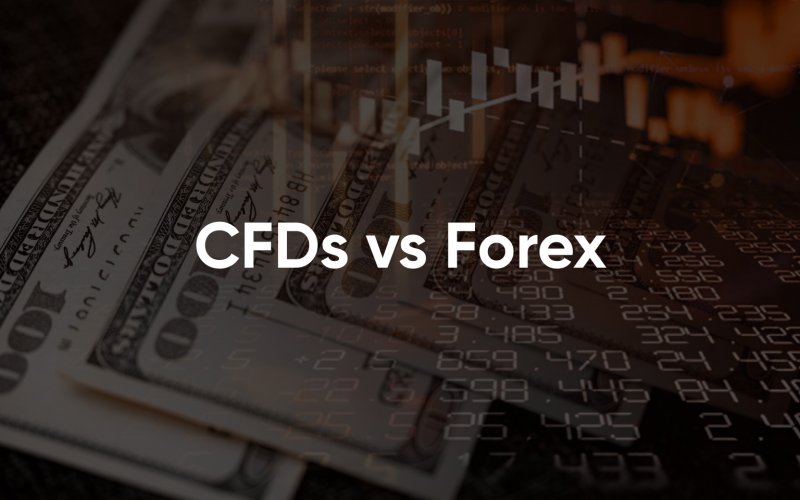The foreign exchange market, better known as forex, is the largest and most liquid financial market in the world. Every day, trillions of dollars’ worth of currencies are exchanged, making it a global hub of opportunity for traders. While the market itself may be universal, the way individuals and institutions choose to participate differs.
Two of the most common approaches are trading through Contracts for Difference (CFDs) and engaging in traditional forex trading, often referred to as spot forex. Understanding the differences between these two methods is crucial for anyone considering a path into the currency markets, as each comes with its own mechanics, advantages, and risks.
Understanding CFD Forex Trading
CFD forex trading is a method that allows traders to speculate on the price movements of currency pairs without owning the underlying currencies.
Instead of buying euros and selling dollars, for example, a trader simply enters into a contract with a broker to exchange the difference in the price of that pair from the time the contract is opened to when it is closed. If the trader predicts the direction correctly, they make a profit; if not, they take a loss.
What makes CFD trading attractive is its accessibility and flexibility. Many brokers offering CFDs provide significant leverage, meaning that traders can control larger positions with a relatively small amount of capital.
This amplifies both potential gains and potential losses. CFDs also allow exposure to a wide range of markets beyond forex, including commodities, indices, and equities, all within a single trading platform.
Retail traders in particular often find CFDs appealing because they can enter the market with modest amounts of money and trade smaller lot sizes compared to traditional forex. This democratisation of trading has made CFDs popular in regions where access to the interbank forex market is limited, such as with forex trading in the UAE, where many retail participants rely on regulated CFD brokers to gain exposure to currency movements.
Understanding Traditional Forex Trading
Traditional forex trading, or spot forex, is the direct exchange of one currency for another. When trading in the spot market, the transaction involves buying one currency while simultaneously selling another, typically settled within two business days.
Unlike CFDs, this form of trading reflects actual ownership of the underlying currencies, even if most transactions remain speculative rather than for physical use.
The traditional forex market operates on a global scale, with transactions flowing primarily through large banks, financial institutions, and multinational corporations. These entities dominate liquidity and pricing, and retail traders gain access through brokers that either connect directly to the interbank market or operate as intermediaries.
The sheer scale of the spot forex market makes it the most liquid financial market worldwide, with daily volumes exceeding $6 trillion.
Key Differences Between CFD Forex and Traditional Forex
Although both methods involve currency pairs, the way they operate is distinct. In CFD forex trading, the trader never owns the currency but simply speculates on its price movement. In contrast, spot forex involves an actual exchange, where ownership—though often fleeting—occurs.
Leverage is another important distinction. CFD brokers often provide higher leverage ratios compared to those available in the traditional forex market, especially in regions with strict regulation. This difference makes CFDs attractive for short-term traders but also introduces higher levels of risk.
Costs also vary. While both methods involve spreads, CFDs typically include additional overnight financing charges if positions are held beyond a trading day, making them less cost-effective for long-term positions.
Traditional forex often provides tighter spreads, particularly through brokers connected directly to interbank pricing.
Advantages of CFD Forex Trading
One of the biggest strengths of CFD forex trading is its flexibility. Traders can open positions with smaller amounts of money and manage risks more precisely by adjusting lot sizes. Because CFDs are available across many asset classes, they also give traders opportunities to diversify beyond currencies without needing multiple accounts.
The leverage offered by CFD brokers allows for magnified exposure to market movements. While this requires careful risk management, it can be appealing to short-term traders who thrive on volatility.
CFDs are also commonly used for hedging purposes, giving traders the ability to offset risks in other investments quickly and efficiently.
Advantages of Traditional Forex Trading
Traditional forex trading stands out for its liquidity and reliability. The spot forex market has been operating for decades and remains the backbone of the currency world. Traders accessing this market often benefit from tighter spreads and deeper liquidity, especially when using brokers connected to interbank platforms.
Another key advantage is the absence of overnight financing costs for holding positions, which makes traditional forex trading more appealing for those with longer-term strategies.
The fact that traders deal with the actual currencies also means that there is less counterparty complexity compared to CFDs, where the relationship is entirely with the broker.
Conclusion
CFD forex trading and traditional forex represent two distinct approaches to participating in the world’s largest market. CFDs offer accessibility, leverage, and flexibility, making them attractive for retail traders, while traditional forex provides unmatched liquidity and a direct connection to the global currency system.
There is no universal “better” choice—only the method that fits best with an individual’s risk profile, trading strategy, and financial objectives. By understanding the key differences, traders can make informed decisions that position them for success in the ever-evolving world of forex.


